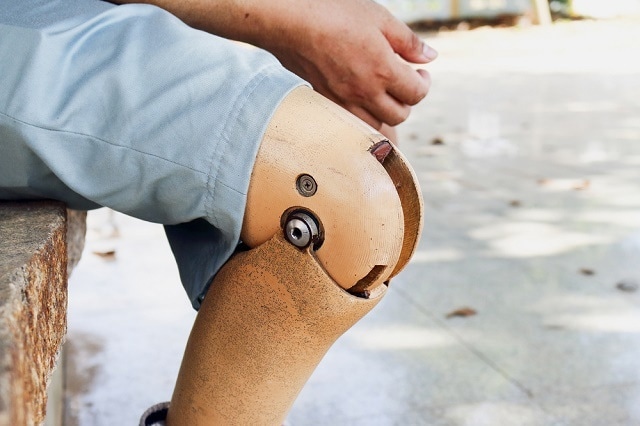In order for an artificial limb to work, it needs to be able to detect information and send a message to the brain that it can understand.
From pressure to heat, sensors need to be able to detect several different kinds of information, process it and send the information along – all in real time.
In October 2015, engineers at Stanford University announced that they had developed a plastic skin capable of detecting how hard it is being pressed, and send this information as an electrical impulse that the brain can understand.
The cutting-edge artificial skin is comprised of two layers, with the top layer acting as a sensing device and the bottom layer moving electrical signals and converting them into biochemical stimuli that nerve cells can identify. The top layer also has
a sensor that can recognize pressure over the same spectrum as human skin, from a gentle finger tap to a solid handshake.
The team began their work by measuring the inherent springiness of plastics and rubbers on the molecular level. They then boosted this innate sensitivity by pressing a waffle pattern into thin plastic, which further squeezes the plastics springiness.
To leverage this pressure-sensing capacity electronically, the team spread billions of carbon nanotubes throughout the waffled plastic. Putting stress on the plastic pushes the nanotubes closer together and allows them to conduct electricity.
The ability to conduct an electric signal essentially mimics human skin, which transmits stress information to the brain as brief pulses of electricity, very similar to Morse code. Growing stress on the waffled nanotubes pushes them even closer together, permitting more electricity to flow through the sensor, and those diverse impulses are delivered as short pulses to the sensing system. Remove strain, and the flow of pulses slows, suggesting light touch. Remove all stress and the pulses stop entirely.
The team then laid this pressure-sensing system on a flexible electronic circuit that could carry pulses of electricity to nerve cells.

Image Credit: RUCHUDA BOONPLIEN | Shutterstock.com
Sensing Heat
In addition to a sense of touch, our natural limbs also give us the ability to sense temperature, and a team of researchers announced in 2014 that they had developed an artificial skin capable of doing the same thing.
Described in a report published by the journal Nature, the prosthetic skin was developed by a large team of American and South Korean engineers. The artificial skin is super stretchy, and can sense heat, strain, pressure and humidity.
The key to the technology behind the artificial skin is a series of super-thin crystalline silicon nanoribbon sensors. The skin can send electrical signals containing the information it detects into the body, triggering peripheral nerves through a super-thin multi-electrode array.
The skin was built extremely thin, allowing very low flexibility, which enables it to wrap or stretch around any surface. The study team said that work still needs to be done to interconnect individual sensors.
The team said their ultimate goal is to have arrays of elastic sensors to grab details on the external surroundings connected to peripheral nerves, allowing for signals to be sent to the brain.
Sensing Muscle Signals
In addition to sensing the external environment, prosthetics researchers are also developing sensors to detect what is going on inside the user’s body.
In 2014, researchers at the University of Colorado announced the development of sensors designed to pick up natural muscle signals in order to refine control of hand and arm prosthetics. Other systems used for this purpose relied on sensors placed on top of the skin, but this new system uses sensors planted within the muscles of the residual limb.
Existing systems only had two sensors, one to open the hand and one to close it. The new system’s 18 sensors are designed for precise control of individual fingers.
References and Further Reading
Stanford Engineers Create Artificial Skin That Can Send Pressure Sensation to Brain Cell
Stretchable Silicon Nanoribbon Electronics for Skin Prosthesis
Smart Skin for Prosthetic Limbs Senses Heat and Touch
Implantable Sensors Improve Control for Prosthetic Limbs
Disclaimer: The views expressed here are those of the author expressed in their private capacity and do not necessarily represent the views of AZoM.com Limited T/A AZoNetwork the owner and operator of this website. This disclaimer forms part of the Terms and conditions of use of this website.